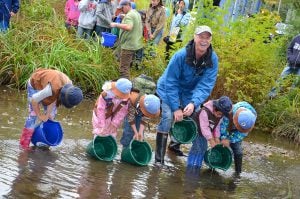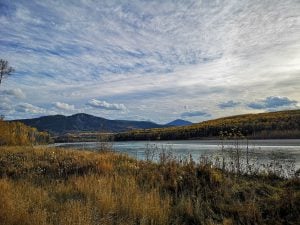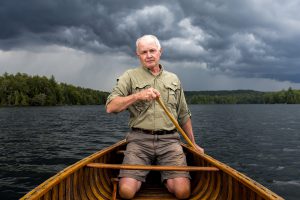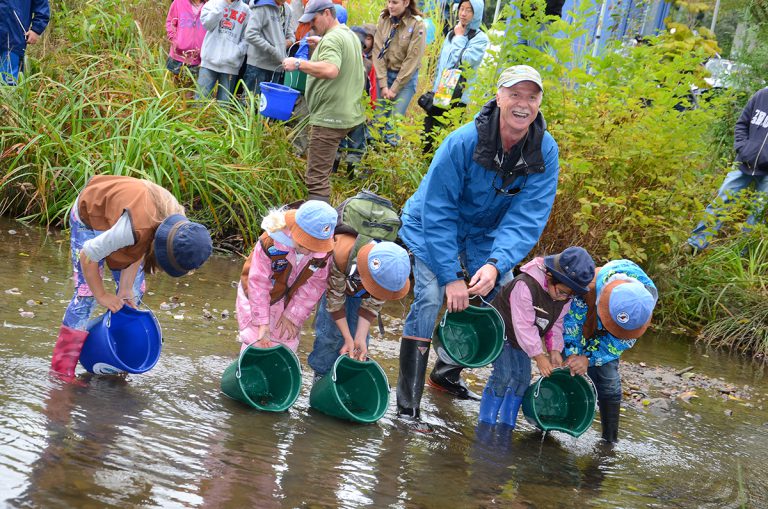On a national level, the declaration has the potential to stand as a precedent-setting victory, inspiring other Canadian jurisdictions to give nature the means to defend itself from industrial encroachment. After all, in a time that’s marked by the double shock of the climate and biodiversity crises, protecting nature by legal means may be one of the most effective ways forward for saving life as we know it.
For Lydia Mestokosho-Paradis, Rita Mestokosho’s niece, the Mutehekau Shipu provides a starting point from which life in Nitassinan, the traditional territory of the Innu, can flourish. “The river is a transportation route. We use it for drinking and cooking. It’s the pharmacy, it’s the pantry,” she says.
Mestokosho-Paradis is sitting so close to the Magpie Falls, or the Third Falls (so-called because it’s the third waterfall upriver from the sea), that she can feel the mist on her face. It’s as if the river is breathing. She runs a hand over the smooth rock. A visual artist and cultural interpreter at the Maison de la Culture Innue in Ekuanitshit, she’s come here with her aunt to honour the river and their ancestors, following a tradition of showing all living beings that you remember and care about them. The personhood designation, she hopes, will prick the consciences of those who want to stem its flow. “They don’t understand the vision that the river is alive. But how can you see a corporation as a person, an entity with moral rights, and not see a river in the same way?”
If they still don’t get it, she urges them to come and see for themselves. “Bring your children, your wife, your husband; look at what this place is. People in government need to come here before making decisions,” she stresses. As if to underscore her point, the sun pokes through the clouds, spilling enough light to draw a rainbow in the mist. “Do you really want to be the person who destroyed ancient portages and animals and their habitat for money?”




















